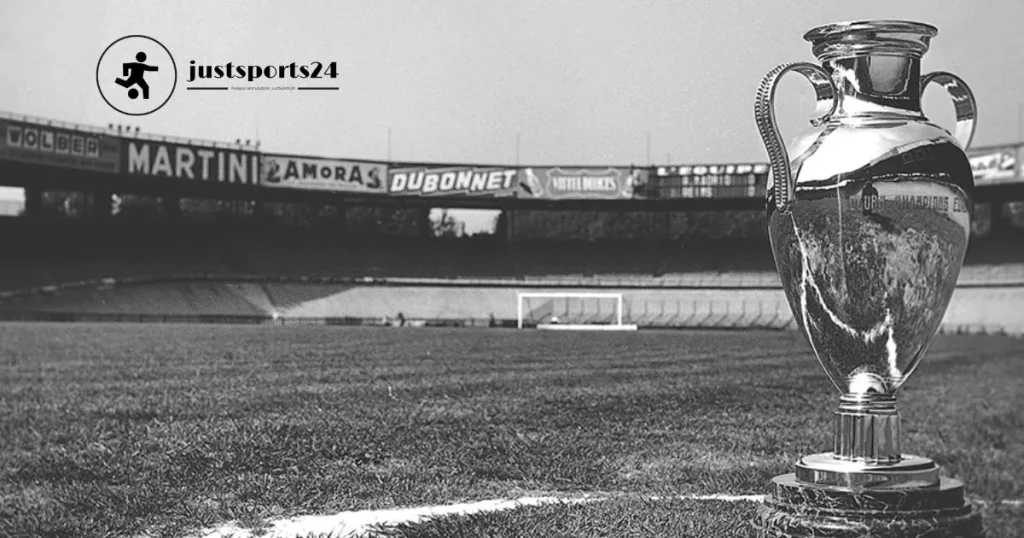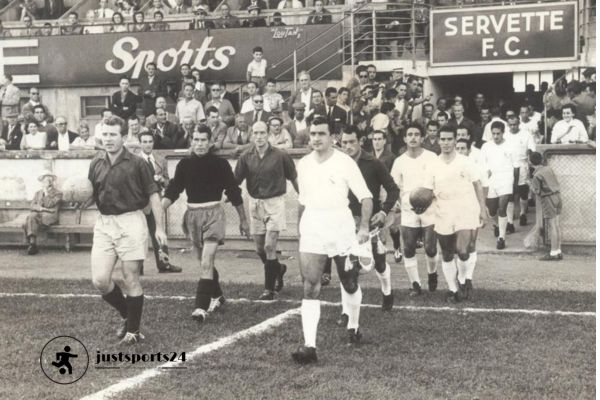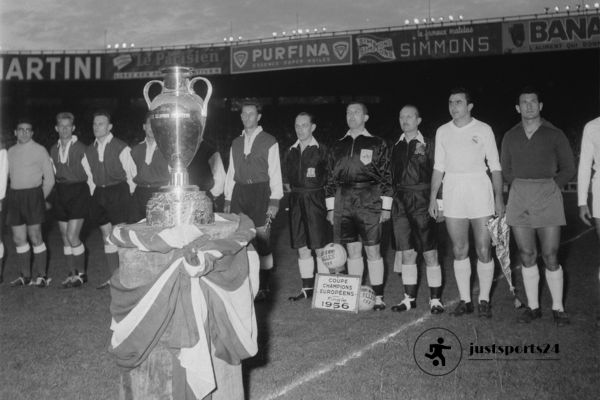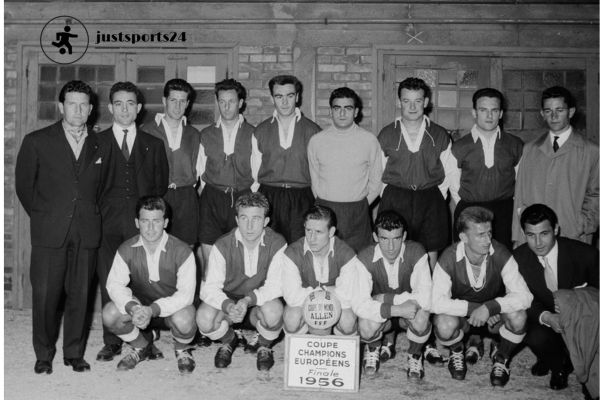
The European Cup was inaugurated in 1955/56 and it evolved into the UEFA Champions League over the years, eventually becoming the most sought-after Club competition in the world. The first-ever season of the tournament not only kickstarted a legendary competition but also gave us some top football clubs and players during those times.
The Birth of the European Cup
By the time the early 50s had arrived, European football was expanding with clubs from all over seeking a way of contesting against one another at the highest possible level. The Union of European Football Associations (UEFA) established the European Cup in 1955 to provide a new tournament for which European national league champions would be eligible. The new competition, allowing only for clubs able to earn Championships on the table marked a different stage in the history of club football – and it started with 16 teams.
Tournament Format
Round of 16: The team who won the first round progressed to the quarter-finals
Quarter-Final:Two-legged matches were played between the eight teams being only four winning sides.
Battle for the Final: The last four teams standing.ErrorMessage
Final: The Parc des Princes in Paris hosted the final, contested in a single match to determine the champion.
It cranked up the tension but crucially it ensured the elite made it through to the grand Netflix-exclusive portion of proceedings.
The Competing Teams
Several of the most illustrious clubs in football history took part in the first European Cup. Several big names showed up in play such as:
Real Madrid (Spain)
AC Milan (Italy)
Manchester United (England)
Celtic (Scotland)
Benfica (Portugal)
All of these teams had their own individual style and skill sets that they brought to the tournament, creating fixtures that will live long in the memory.
Key Matches and Highlights
Group Stage Dynamics
The opening round set the stage for what would become one of the most upset-laden tournaments in recent memory. The force of Real Madrid became dominant, they went out and attacked, showing what can be done if the ability on the field is matched by thought off it. Real Madrid vs Servette FC – Group Stage – Standout Fixtures Boasting the title, the Spanish side cruised to a 5-0 win on aggregate.
Quarterfinal Showdowns

By the quarterfinal stage, everything had escalated to a fever pitch. Real Madrid v Manchester United was the pick of the action. Following a 3-1 defeat in the first leg against Real Madrid(and then battling to earn a tie despite their heroic effort), Manchester United bowed out of the competition as this latest defeat gave the Spanish powerhouse a 5-3 win on aggregate.
Semifinal Thrills

The semifinals was a classic Real Madrid vs AC Milan. Real Madrid got three away goals in a 4-2 first-leg victory, so even a loss but just by a single goal sealed off qualification. We saw their tactical discipline and quality again and, indeed, that little extra to confirm them as favorites.
Real Madrid v Stade de Reims (1956 final)

The final took place on June 13, 1956, in the glorious Parc des Princes stadium of Paris. Stade de Reims prepared to play a high-profile match against Spanish side Real Madrid. The contest was a thriller that produced both teams at their attacking best.
Alfredo Di Stéfano scored in the 5th minute to give Real Madrid an early lead. The hosts then leveled when Jean Templin scored for Reims. Real Madrid soon restored its lead, however, through goals from Francisco Gento and Ferenc Puskás to run out 4-3 winners. The incredible success established Real Madrid as the first European Cup champion and launched the club into continental dominance.
Legendary Players
The first European Cup installment witnessed many legends who had a memorable impact on the competition;
Alfredo Di Stéfano
One of the all-time greats and a spearhead behind Real Madrid’s success, Alfredo Di Stéfano. He was a complete player that could be used at various positions and no one commanded his leadership on the field. His eye for goal and vision was a key component in Madrid´s attack-committed tactics led by Di Stefano.
Ferenc Puskás
During that same 1955/56 campaign another all-time great, Ferenc Puskás, moved to Real Madrid. The well-known goal scorer and spike megalomaniac, Puskás had won the hearts of most fans. His strong left foot and long-range shooting prowess made him a perpetual menace to enemy defenses.
Raymond Kopa
The pivotal link to Real Madrid’s midfield was provided by Raymond Kopa, who was not only a playmaker assisting the forwards but also a skilled midfielder. His skill and intelligence added to the burly Argentine-Dual playmaker Di Stéfano and most adroit Puskás, making up the attacking trident of history.
The legacy born from the 1955/56 Season
The 1955–56 European Cup was the first season of the European Cup, UEFA’s premier club football tournament. The victory established Real Madrid as a powerhouse of European soccer, and they would justify that status for years to come.
Growth of the Competition
Thanks to a successful debut, the tournament was expanded in upcoming years. When it was expanded to include more teams and have a group stage, the European Cup became the UEFA Champions League. This tournament today belongs to the best in club football worldwide, attracting tens of millions of viewers.
An Inspiration To The Coming Generation

The first-ever version of the UEFA European Cup 1955/56 has been a driving force behind many players, coaches, and fans alike. The tournament has left a lasting legacy in the way clubs have put their houses in order and been encouraged to pursue excellence. Clubs dreaming of European successIt has been no time at all since the excitement of European competition began to grip and already fans are daring to dream of lifting that prestigious trophy.
Conclusion
The first season of the UEFA Champions League in 1955/56 marked a watershed for football, one whose ripples would be felt across club football for many years. It was the dawn of an astonishing dynasty that included legends such as Alfredo Di Stéfano and Ferenc Puskás for Real Madrid.
At JustSports24, we cherish the legacy of football and the memorable narratives that have defined the identity of this game. That the 1955/56 European Cup helped forge a narrative of fanaticism, quality, and chaos that has forever sustained the beautiful game.

